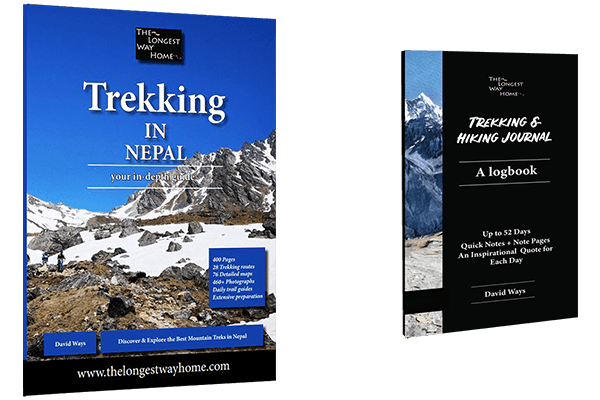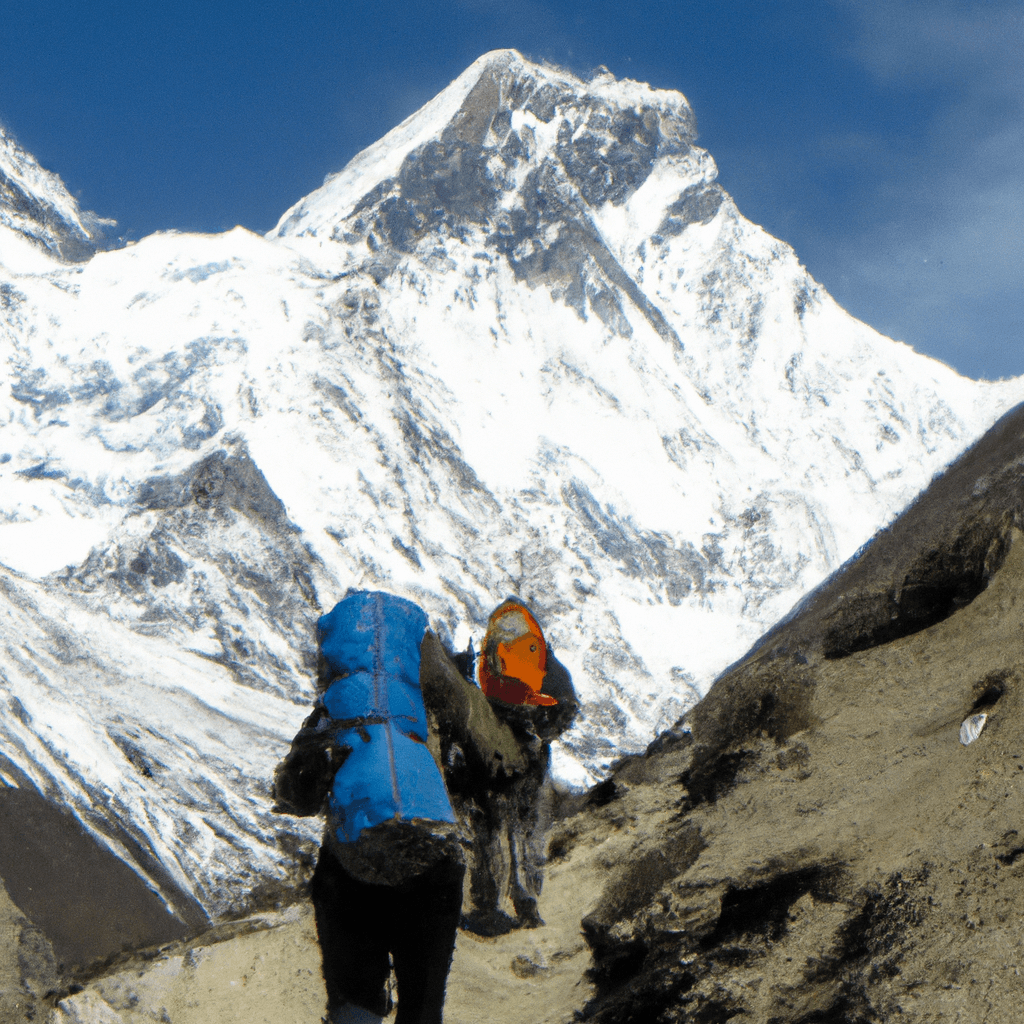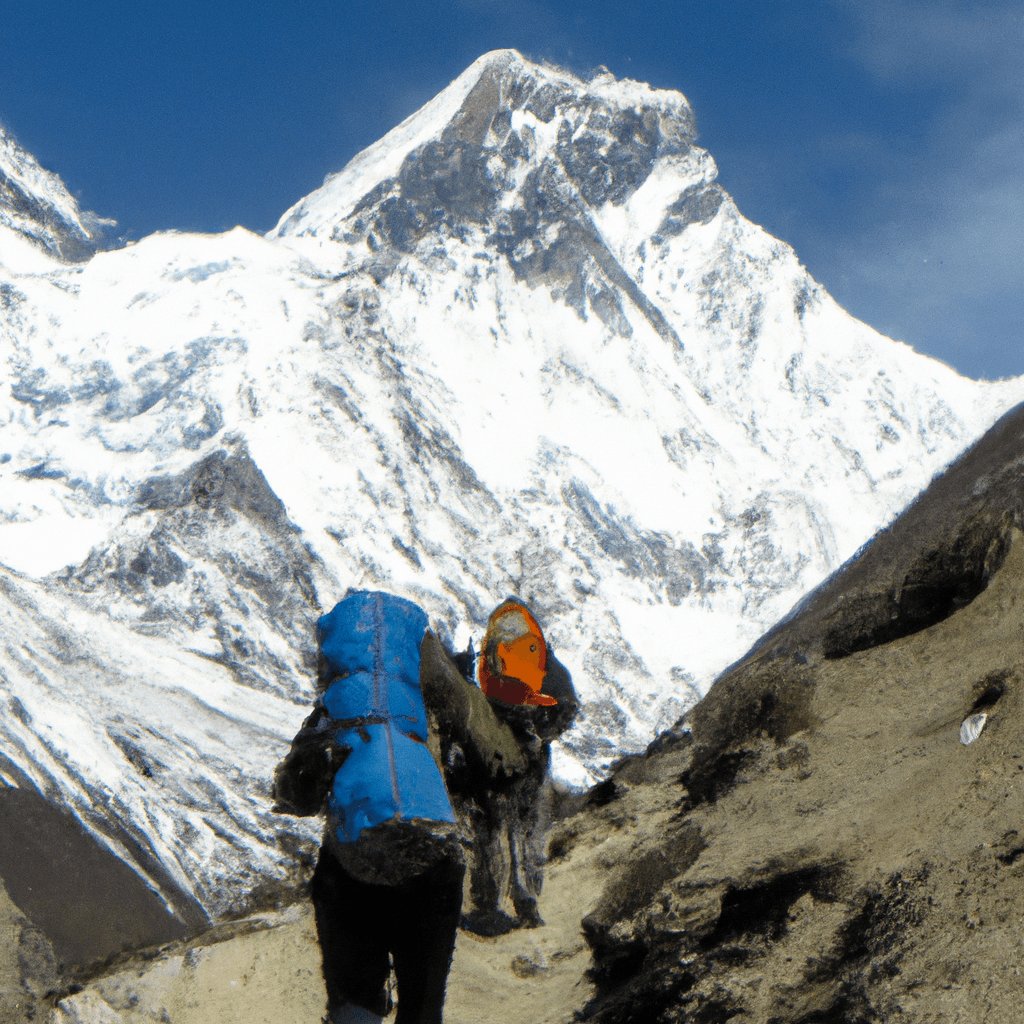

Nepal has banned solo trekking in Nepal from April 1st 2023
Nepal Tourism Board, Trekking Agencies’ Association of Nepal have decided that from April 1st 2023 all trekkers visiting Nepal must have a mandatory trekking guide with them. Free Independent Trekker cards (permits) will no longer be given out. All trekkers must now pay a new increased fee for regular Trekker Information Management Cards. Today their release their official statement.
It’s a decision that has gone back and forth for a decade. It’s also a decision that will have huge repercussions on Nepal’s tourism industry the likes of which the country will be feeling for years. Nepal has now lost its title of the world’s greatest independent trekking country and also its title as a land of adventure to one of land of package treks. Hotels, restaurants, local businesses will all see a loss of independent tourists, backpackers, budget travelers, and more as large tour companies seize on a prize they’ve wanted for years. Head of Nepal Tourism Board Dhananjaya Regmi has stated that the minister for tourism supports this ban.
The announcement was greeted with scorn and disappointment with international trekkers, along with many local Nepali businesses. The reasons for this move to ban independent trekking in Nepal are clear to all – a clear move to make money for “well connected trekking agencies” and to tighten the noose on foreign tourists wallets (Nepali trekkers are not included). They’ve wrapped all of this up under the guise of improving safety – which has been disproved long before this announcement.
What are the new rules for trekking in Nepal?
- Starting April 1st 2023 all foreign trekkers in Nepal must be accompanied by a Nepali guide who is licensed and works for a trekking company.
- FIT Cards are being replaced with new TIMS cards costing $20 USD (an increase of $10).
To be clear. All non-Nepali single people, couples, and groups will need a mandatory trekking guide for all official treks in Nepal. Freelance guides are no longer able to take trekkers. All guides must work for a TAAN licensed trekking company.

“The decision to enforce mandatory guide for trekkers falls under Nepal Tourism Board’s jurisdiction,” said Rajendra Kumar KC, spokesperson for the Tourism Ministry. “The issue was under discussion for quite a long time to ensure the safety of the trekkers.”
“The ministry has no objection to it,” KC added. (Kathmandu Post).
Why has Nepal banned independent trekking?
Officially the reason is to improve trekkers safety. However the numbers of missing trekkers or trekkers who have died in Nepal that are being quoted by Nepal Tourism Board are simply not correct. They are quoting 10-15 every year.

The reality is that in 2016 there were 5 missing trekkers. In 2017 there were also 5 missing trekkers. In 2018 the official number was 3 with 7 unconfirmed. 2020-2001 trekking was closed due to the pandemic. In 2022 there were again 5 missing trekkers. It should also be noted that several of these missing trekkers went missing with guides (missingtrekker.com). Likewise, deaths of trekkers are about equal between solo trekkers and trekkers with guides. Compare that to India where 32 trekkers went missing last year. In Switzerland a whopping great 122 trekkers got lost in the mountains in 2021 and 1,525 needed to be rescued.
Nepal is not exactly leading the list of missing trekkers around the world.
A flawed reason for banning independent trekking in Nepal
You may have noticed aside from the dubious numbers from the spokes people making this ruling is that Nepali trekkers are not included in the proposed new “safety” protocol of having mandatory guides. Yes, a solo Nepali person can trek anywhere without a guide. And yes, Nepali trekkers are included in the numbers above. It seems those making up these rules have no care for the safety of their own citizens who also go missing and are included in the above numbers.
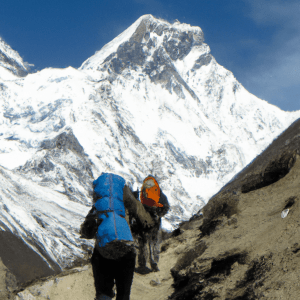
It’s also worth pointing out that there are a huge amount of people within NTB and TAAN who own trekking agencies. It is clearly in their financial interest to try and restrict trekkers and push them into their exclusive package treks. They are after all the people making up the rules – conflict of interest? Meanwhile, there is no improvement in trekking guides training in a country where just last year in November a registered trekking guide deserted 11 trekkers in the snow whereupon two died. A good lesson for those reading to hire a good trekking guide from a trusted recommendation.
It’s also worth pointing out the utter failure of TAAN and NTB in making the current Trekker Information Management Cards worth while. How bad is the system that stated by TAAN to help ensure the safety of trekkers in Nepal? Well, currently none of the checkpoints are open. In fact they’ve all been closed since 2020. And, to add insult to injury NTB still insist trekkers buy TIMS cards for the Solukhumbu (Everest) region despite the local regional administration banning TIMS cards since 2018 because they were so useless!
The reason for the ban to put it honestly: corruption and greed
How will this new rule on making trekking guides mandatory in Nepal work?
This is the icing on the cake. There was no plan. All TIMS cards checkpoints are closed with a rumor that they will be opened in mid April. NTB seem to be under the impression that trekking agencies will have to enforce the rule and be responsible for all trekkers. It sounds a lot like mob rule – similar to the Maoist beatings of tourists in the mid 2000s who refused to pay on the spot fines for going through their land. If this occurs, then Nepal will no longer be in the top 100 of any trekking destination, let alone the top 10 which it is about to drop out of. The irony is that NTB is enacting this mandatory guide rule from an old rule from the mid 2000s due to the danger from Maoist groups at the time. Something that is no longer a problem. However, something similar might start up again, in terms of groups harassing trekkers if they are seen without a guide.
As of April 1st TAAN announced that trekking companies must now apply for TIMS cards via a new E-TIMS system at https://tims.ntb.gov.np/.
The systems has been condemned by trekking agents as being difficult to fill out. Guides needing to print out the completed forms. Online payments methods only being accepted. And, delays in the issuing of the TIMS cards.
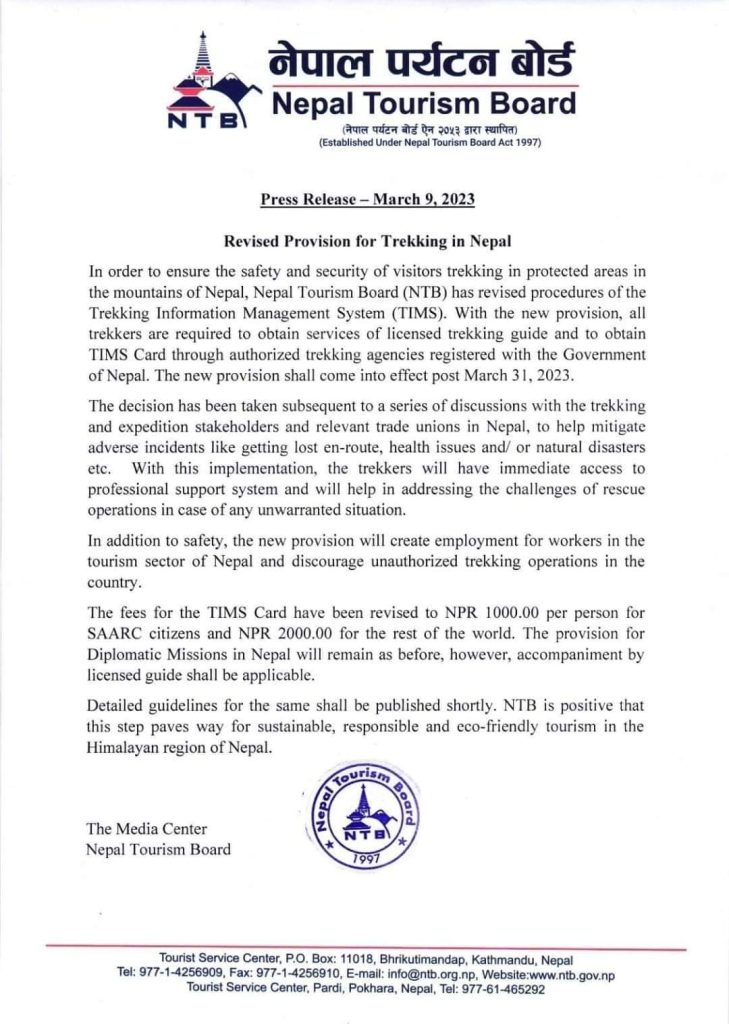
Even if the TIMS card checkpoints open up again, nobody knows if a solo trekker on April 1st coming back from a trek not knowing this rule will be fined or arrested? Similarly what happens if independent trekkers head out and are stopped randomly halfway through their trek? Are they sent back? Fined, or forced to have a mandatory trekking guide flown in by helicopter (inside joke on the helicopter scam)? Again, it’s all been left up in the air with a promise of guidelines will be introduced shortly – a little late for people who already booked flights and their budgets this year.
In one grasp of greed Nepal has shattered its trophy as the world’s greatest independent trekking country.
The worst that can happen is nothing. Which will be typical of NTB and TAAN. No official improvements in guide training or proper guidelines just like the banning of TIMS card in Solukhumbu. This leads the way to local groups or guides harassing solo trekkers when trekking without a guide. We are all basically waiting for official guidelines. Today was the first announcement in a week of waiting.
Official guideline FAQs from Nepal Tourism Board
- What if I take permits before April 1st ? The new rule will come into effect from April 1st, 2023. The trekkers who get the permits and start the trek before April 1st will not require a guide. But they’ll need to have entered the trekking area before April 1st.
- What if I want to do ACT or similar treks in bikes? All the treks need to comply with the new rule. You can contact a trekking agency in Nepal for the guide to accompany you in bikes. Trekking Agencies in Nepal
- What if I an experienced trekker and associated to a trekking/mountaineering association in home country? The rule is applicable for all the foreign national trekkers.
- What about the areas such as Chame, Muktinath etc that require TIMS card just because they lie inside a National Park or conservation area?
Yes, all the areas need a guide and permits taken from an agency. - Is this rule also applicable when I hike around Kathmandu? Or to Sarangkot? Where all are these rules applicable? The Revised Provision for Trekking in Nepal must be followed only while trekking to areas where TIMS is applicable. It is applicable in all national park areas in the mountains. It is not applicable in Kathmandu Valley outskirts, Pokhara outskirts, and hiking areas in and around major cities.
- Do I have to go via a trekking agency? Or is it OK so long as I have a guide? It is mandatory to hire a licensed trekking guide through a government-registered trekking agency.
- How can I find that out if the trekking agency is legit? Trekking guide must be hired through government-registered trekking agency. You can verify information on the trekking agency from Department of Tourism and Trekking Agencies Association of Nepal. (all trekking agencies in the guidebook Trekking in Nepal and the Nepal Guidebook are legitimate government-registered trekking agencies)
- What are the consequences if I do not follow this rule? Not following the rule is a punishable offense.
- I am a trail runner and fast packer, no agency specifically provided guides that can keep up with me. What should I do? It is applicable to all. You must ascertain that the trekking agency can provide guide who matches your specific requirement.
- I am an expat living in Nepal. Does this rule also apply to me? Yes, the rule is applicable to Diplomats as well as Expats
- I am Nepali. Does this rule apply to me? The rule is not applicable to Nepali citizens.
The Following rules were released by TAAN to trekking agents on the 1st of April 2023.
- Trekkers without a guide or TIMS will be fined 12,000 RPS
- Trekking companies found issuing TIMS and no guide will be issued a fine of 10,000 RPS
- Checkpoint staff get a 20% incentive of the total fine when they catch a trekker
- Mountain bikers need a TIMS and Guide
- Restricted areas do not need a TIMS (but you need one to reach it)
- Helicopter tours do not need a TIMS or guide unless it’s a one way flight
- Diplomats and their families only have to pay 500 RPS for a TIMS
- All foreigners travelling alone by vehicle need a TIMS and guide
- TIMS and a guide are not needed if the area is easily accessible by motor vehicle
Will this ban be changed?
There are two scenarios that will play out here. Despite the ruling, TAAN will fail to implement their new system and checkpoints properly. The issue will boil down to if trekkers can get travel insurance for what will become “unofficial treks” aka any trek with no guide. However, the likelihood of this rule never being enforced is still high – at the moment. Sadly, based on my experience in Nepal, I can tell you now that we won’t know more until the end of April when reports come in if checks are being done or not and by whom.

The next way this can be changed is how it has happened in the past. Nepali hotel associations and restaurants along with small businesses object to this as their businesses lose out to package tour operators. Previously they have put up a good fight to stop bans on solo trekking from occurring. However, this time around after the pandemic and cost of living increases it seems desperation has taken hold and many have signed off on the ban. I would estimate it won’t be until 2025 that they see a decrease in independent visitors to their businesses.
Finally, tourists themselves will have a say – by simply not visiting Nepal and choosing another mountainous country that does not enforce mandatory guides (vast majority of the world). The first batch of independent travelers to do this will be backpackers, followed by experienced solo trekkers, repeat solo trekker tourists, followed by people who simply don’t want the restrictions of having a guide with them.
Are there any treks that an independent trekker can do without a guide in Nepal?
I’ve always advocated tourists to hire a guide for your first trek in Nepal. Even experienced trekkers. However, I also support independent trekking for those with experience or for those with more than one trek completed – it’s one of the things that made Nepal so great. Trekking alone in the mountains with nature all around you. First hand experiences of adventure.
You can still trek in Nepal without a guide in areas where you “don’t need a TIMS card”. Examples of this include
As you may notice these are all low altitude treks that don’t have TIMS checkpoints or are outside National Parks. Khopra Danda is another one however it depends how you reach it.
All of the above are available in my book Trekking in Nepal.
Here’s something for high altitude trekkers too. The Solukhumbu (Everest) region does not accept TIMS cards and have stated that guides are not mandatory in the region. Group trekkers with guides need to pay a local regional permit, while independent (solo) trekkers can trek so long as they buy a TREK card (USD $20). This may well change but as of now these treks also don’t require mandatory guides.
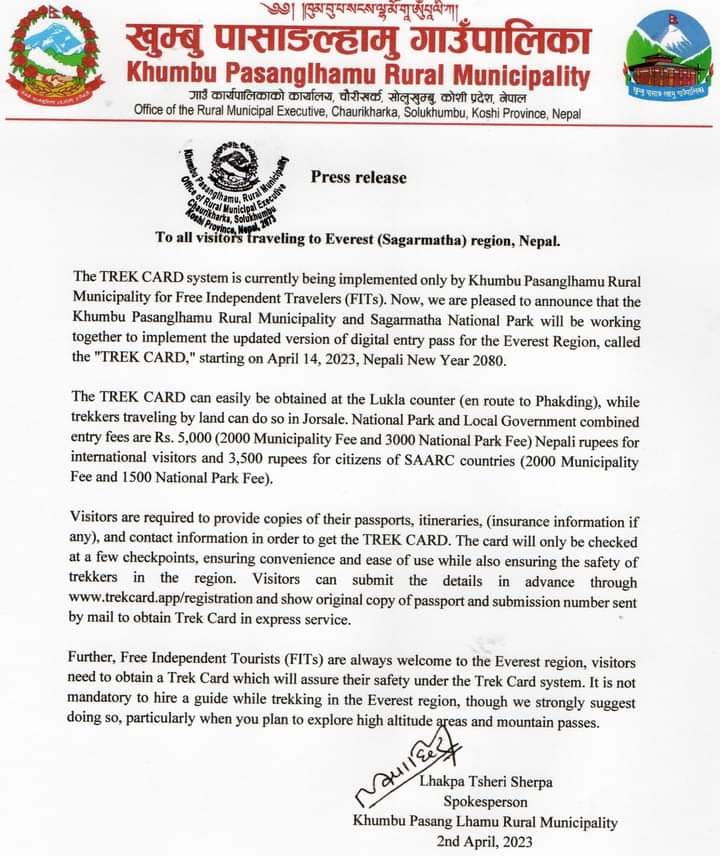
My guess is the local administration of Solukhumbu will enforce the ban at some stage, but for now, there is an official letter stating you can trek alone on those treks. However, once again, my own advice is for all first time trekkers to take a guide.
All of the above are available in my book Trekking in Nepal.
Is this the end of trekking in Nepal?
No. You can still trek, but you’ll need a guide, maybe. Nepal is a country where many rules are imposed on people, but the vast majority of rules are never implemented. There was a great law that banned car honking in Kathmandu in 2017 – it’s still a law, but nobody obeys it. Cars were banned in Thamel during 2018 – today cars and motorcycles drive with reckless abandon throughout Thamel.

It’s the uncertainty with no guidelines and most importantly no improvements that many people don’t like. The old saying of “carry on” as normal applies to this “ban” on independent trekking. The dreaded, wait and see in April what happens is being touted. It’s all very much up in the air, unfortunately. However one thing is certain, ask a trekking agent or NTB and they will categorically tell you that a guide is now mandatory only for “foreigners”- why? Because they make money from it. Ask them what actual safety precautions have been created or what improvements to trekking guide training has been introduced and you’ll get a blank stare and a perhaps, if you are lucky a head wobble.
The news of Nepal’s ban on independent trekking is a different story than most. Indeed, in one grasp of greed Nepal has shattered it’s trophy as the world’s greatest independent trekking country. Gone also is the moniker of Nepal being a country filled with adventure, replaced with the moniker of a country of package tours and mandatory watch dogs. Make of it what you will. We carry on until such time as someone makes proper guidelines with clear definitions, regulations, and implementation.
Get my Trekking in Nepal Guidebook & discover more than anyone else!
Looking for more insider tips and information like this? Get the most up-to-date, popular and dedicated guidebook to Trekking in Nepal in the world. Covering 28 full treks over 400 pages. The only trekking guidebook in the world with trekking links showing you how to link treks together! Available as an instant download or worldwide shipping for the paperback edition!
Take a look below and you’ll find out why this beats all other guidebooks!
